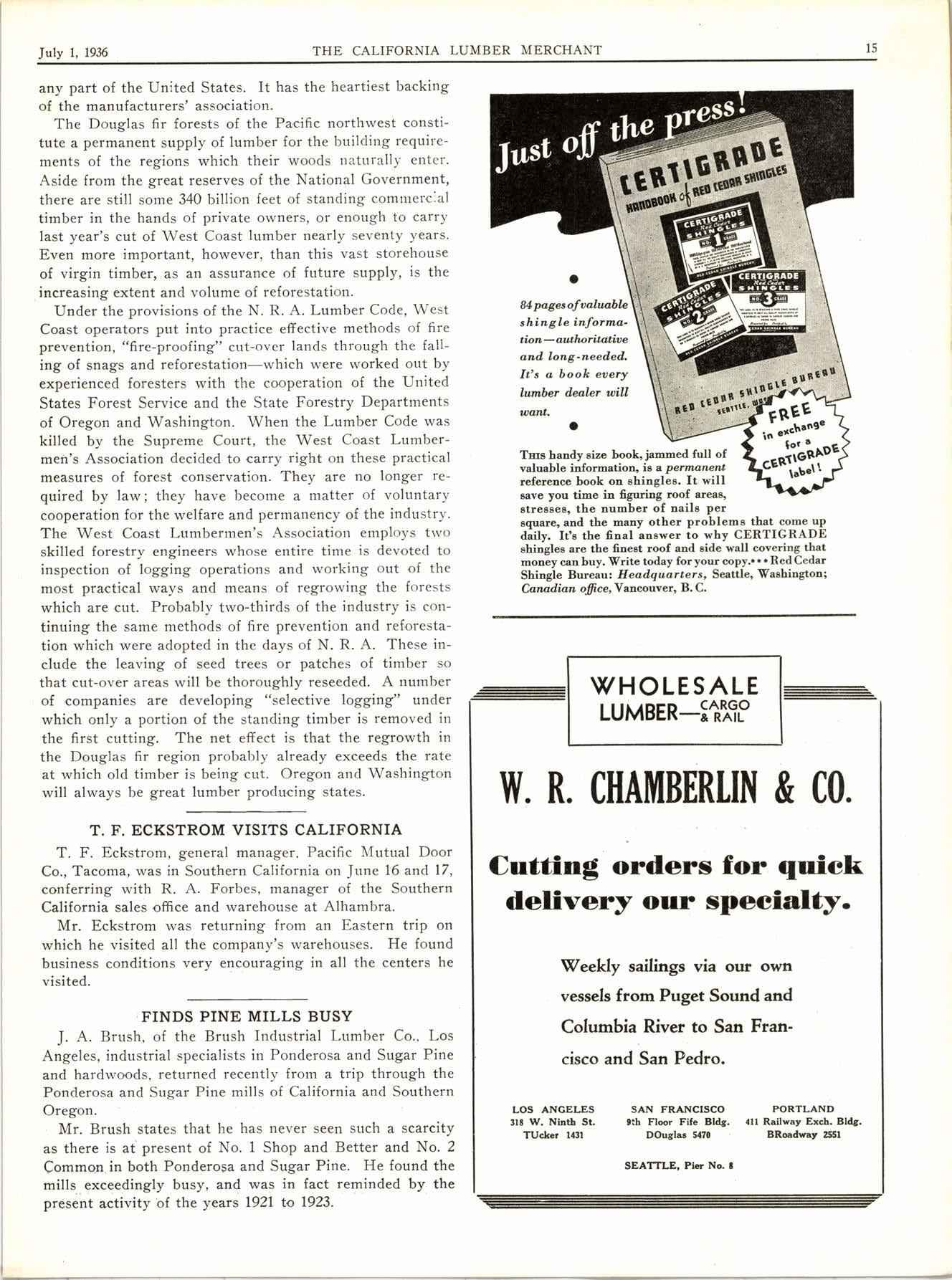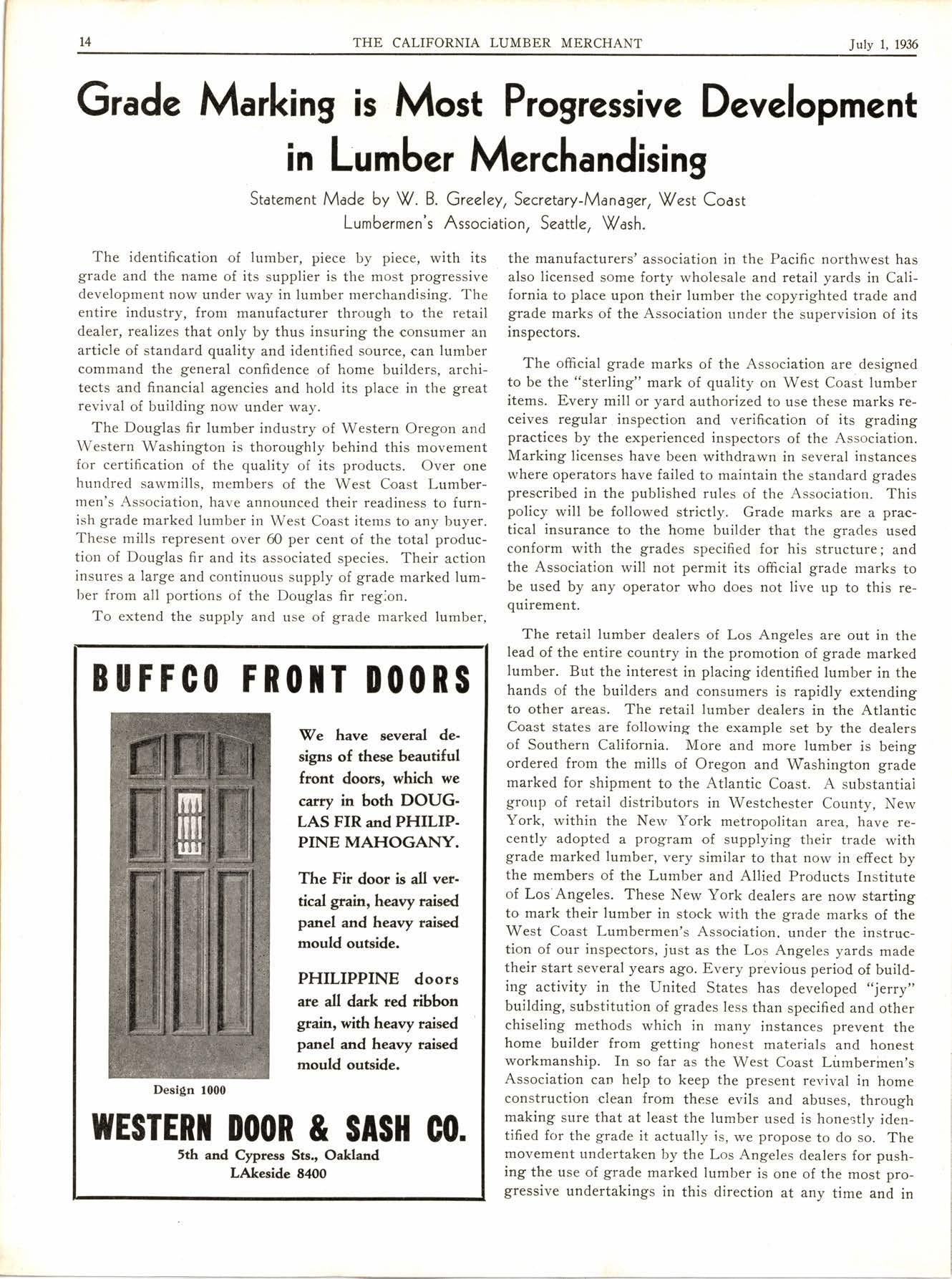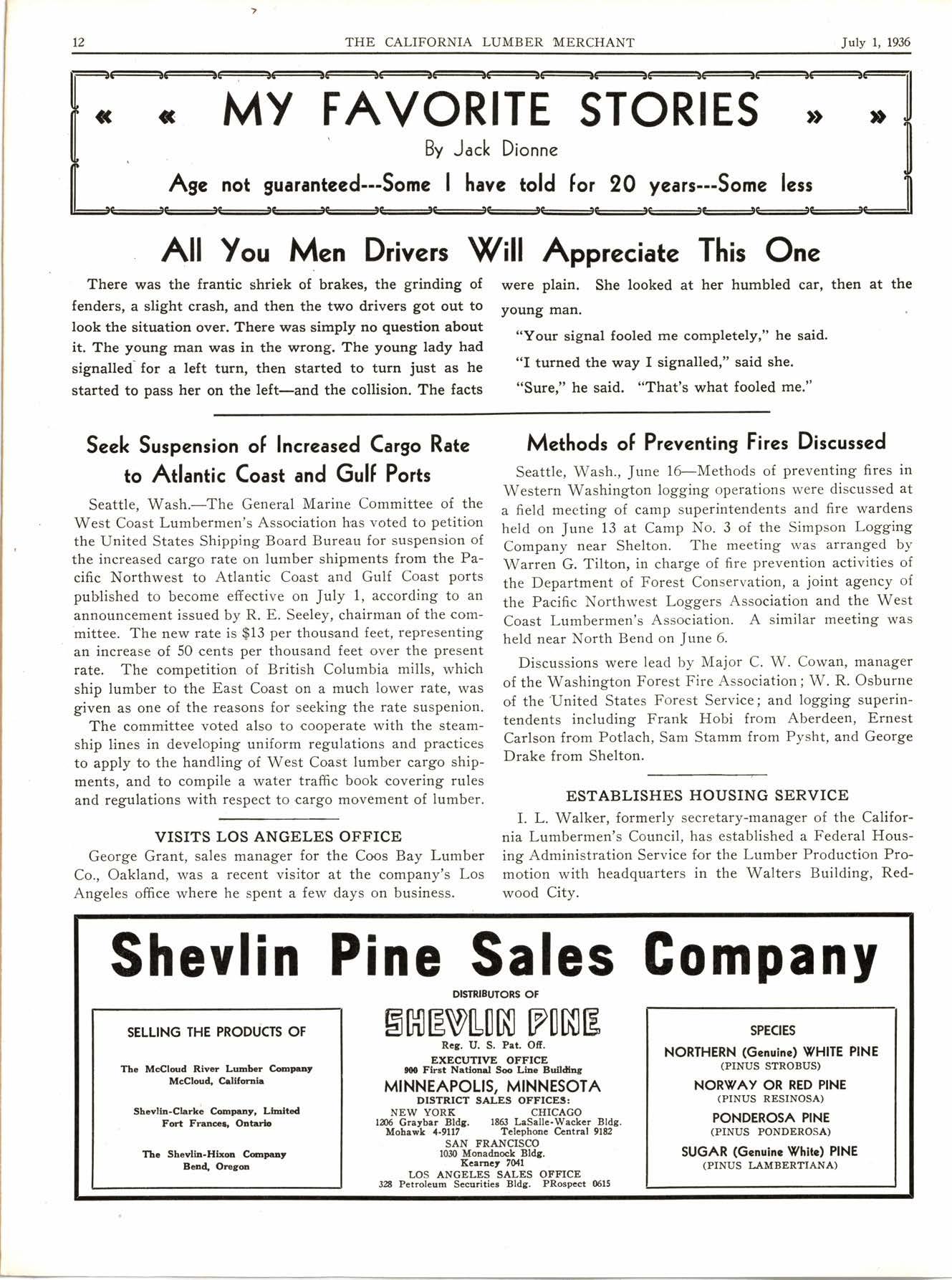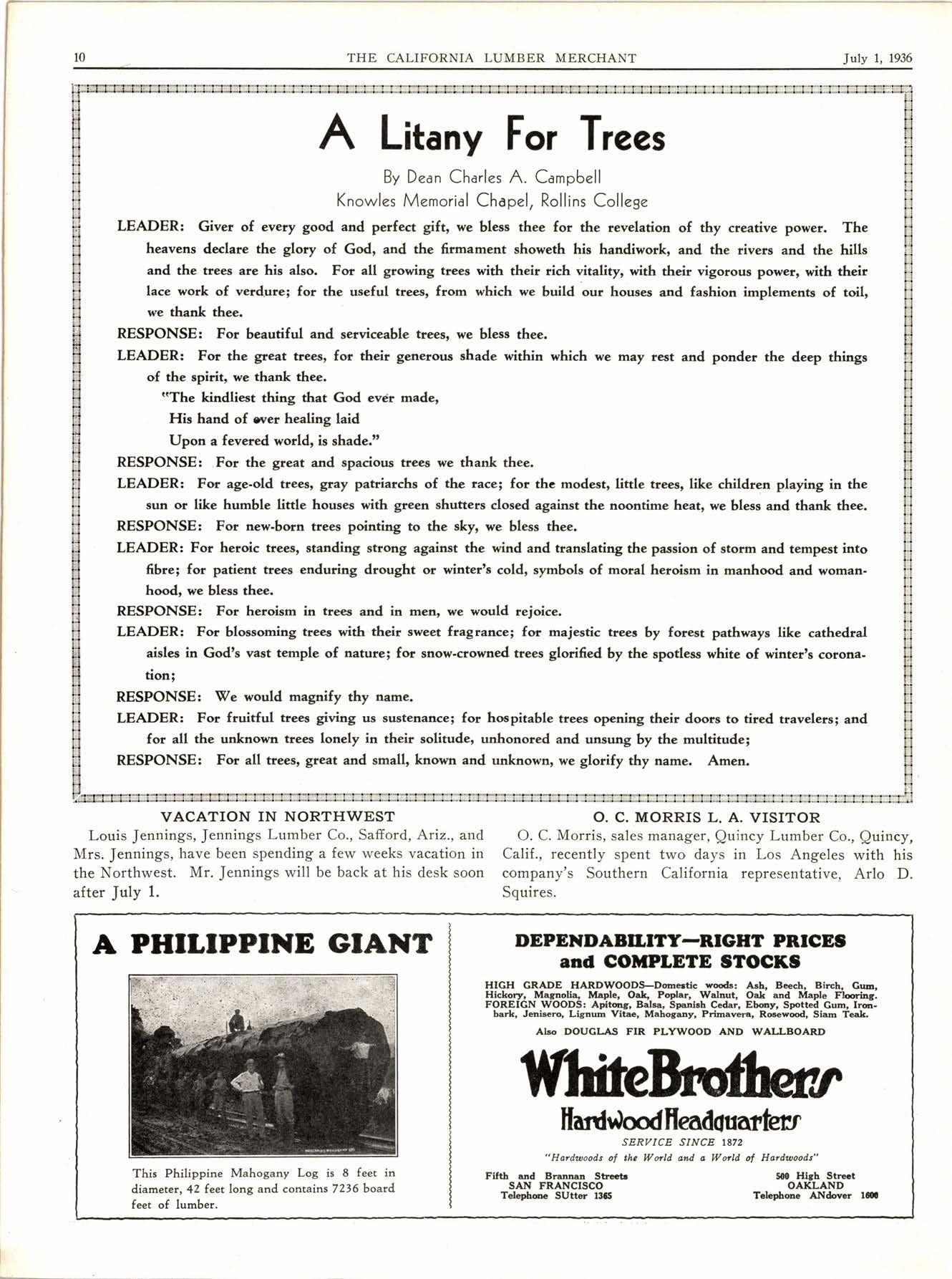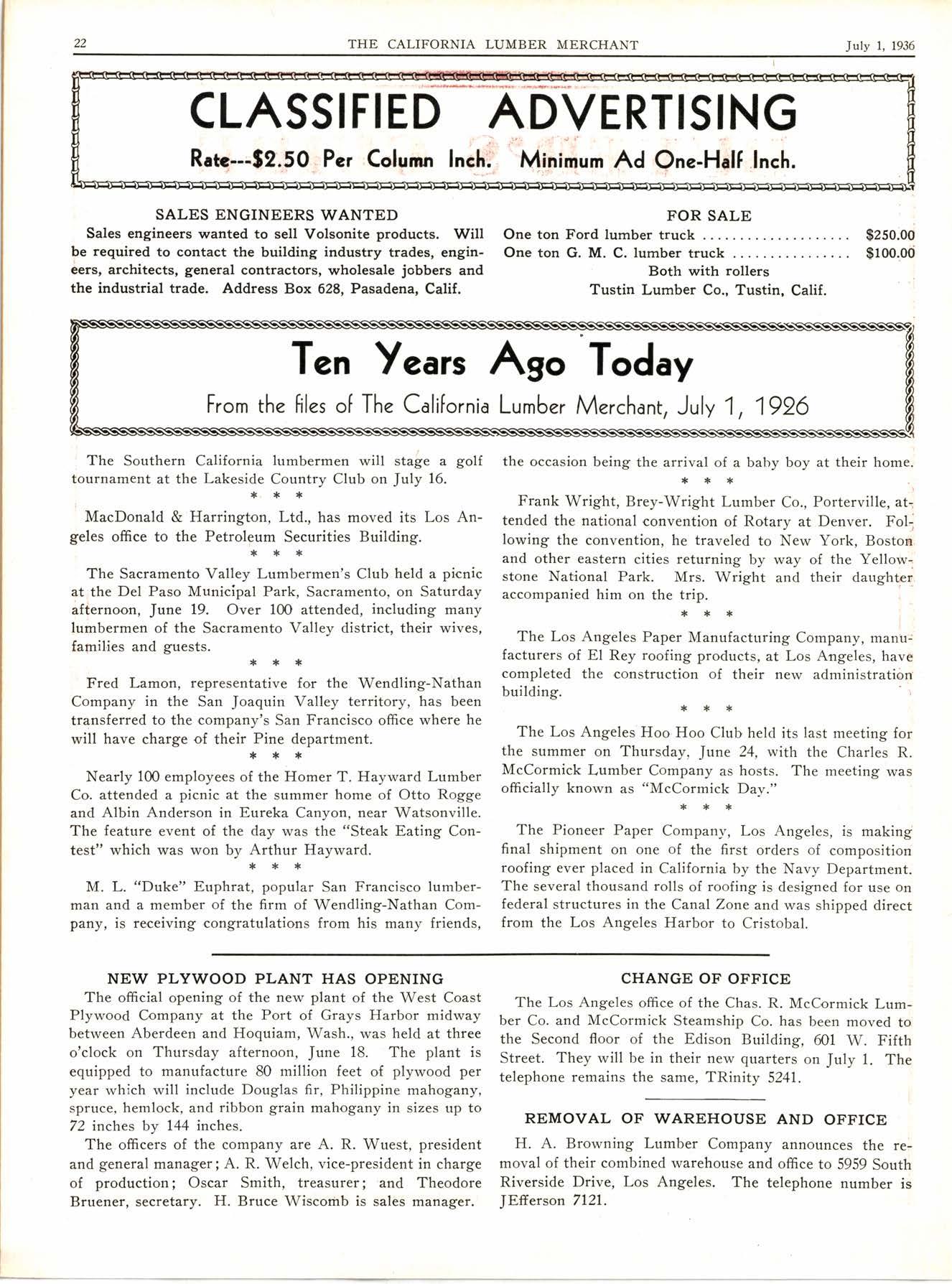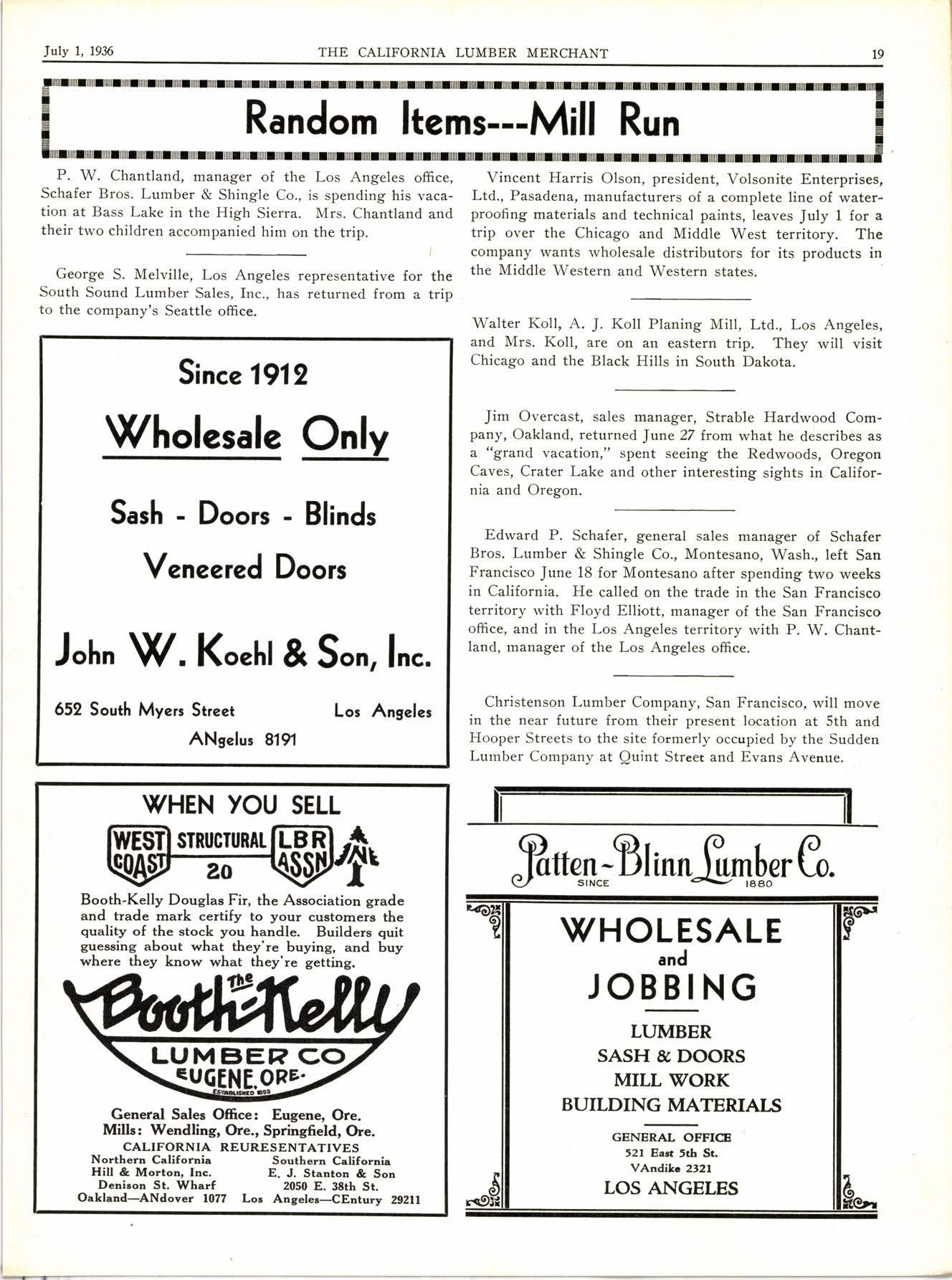
1 minute read
Chromated Tanc Chloride Lumber Now
Available in California
Modem pressure treating plant operated by J. fi-. Baxter & Co. at Long Beach, Calili where Chromated Zinc Chloride andl creosoted material are processed [9r the Southern Califomia trade.
In line with the program of establishing stocks of treated building lumber in California, J. H. Baxter & Co., San Francisco, has recently added a complete stock of Chromated Zinc Chloride treated lumber at its Alameda, Calif.. yard. A dealer service will be maintained to enable Northern California lumber yards to draw on these stocks for their immediate requirements. Special orders and dealer's stock requirements will be shipped direct from the Northern plants of the West Coast Wood Preserving Co., through J. H. Baxter & Co., California agents.
. Plant improvements have recently been made at J. H. Baxter & Co.'s wood preserving operation at Long Beach, Calif., to supply the Southern California market with Chromated Zinc Chloride treated lumber. With these facilities now available for treating dealer's lumber more than twenty Los Angeles lumber dealers have installed complete stocks of CZC lumber to meet their requirements for treated underpinning.
Air view ol the Eagle Ha[or, !(/ash., treating plant of the \(/est Coast \(/ood Preserving Co. Another large plant is located at Seattle. Both plants have fasilities lor cargo shipping to the Calilornia market.
Chromated Zinc Chloride treated lumber is recommended for termite and decay resistant construction and is also recognized for its fire retardant qualities. The product is clean, odorless and paintable making it especially suitable for building construction.
Zinc Chloride, the basic reagent in the improved Chromated Zinc Chloride, has been widely used for framing, sheathing and underpinning in commercial work throughout the United States and in Post Offices, barracks and other permanent government buildings, many of which have recently been erected in California. Chromated Zinc Chloride is now replacing Zinc Chloride in specifications for this preservative, it being an improved form of this long established salt treatment, with added effectiveness where the lumber is exposed to dampness.

